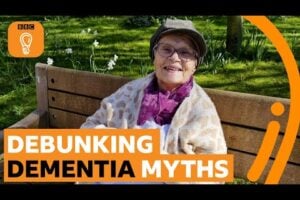The Senior Gems® are based on the Allen Cognitive Disability Theory. Each gem represents a stage of dementia from normal aging through late-stage dementia. We use the gems to help us understand the changes that are taking place and to know what our clients are still able to do in order to provide the best care possible.
The following series of videos goes through each stage, as depicted by a descriptive gem that has a lot to do with the specific stage.
The Diamond Stage: Diamond is the first stage of dementia. This means the cognitive changes that are happening are no longer “normal.” A diamond is the gem selected to represent this stage because diamonds are still clear, but they are very rigid. In other words, a diamond can still do things as they always have, but they are going to struggle with new information.
Recognizing a person can go from one gem level to another in a day, in a morning, in a moment, because Alzheimer’s varies. Our job as care partners is to recognize the indications of the gem-level they are at and provide the right environmental support and right care, right then. Afterwards, re-assess the gem level to offer the best care. That will make everyone happier.











